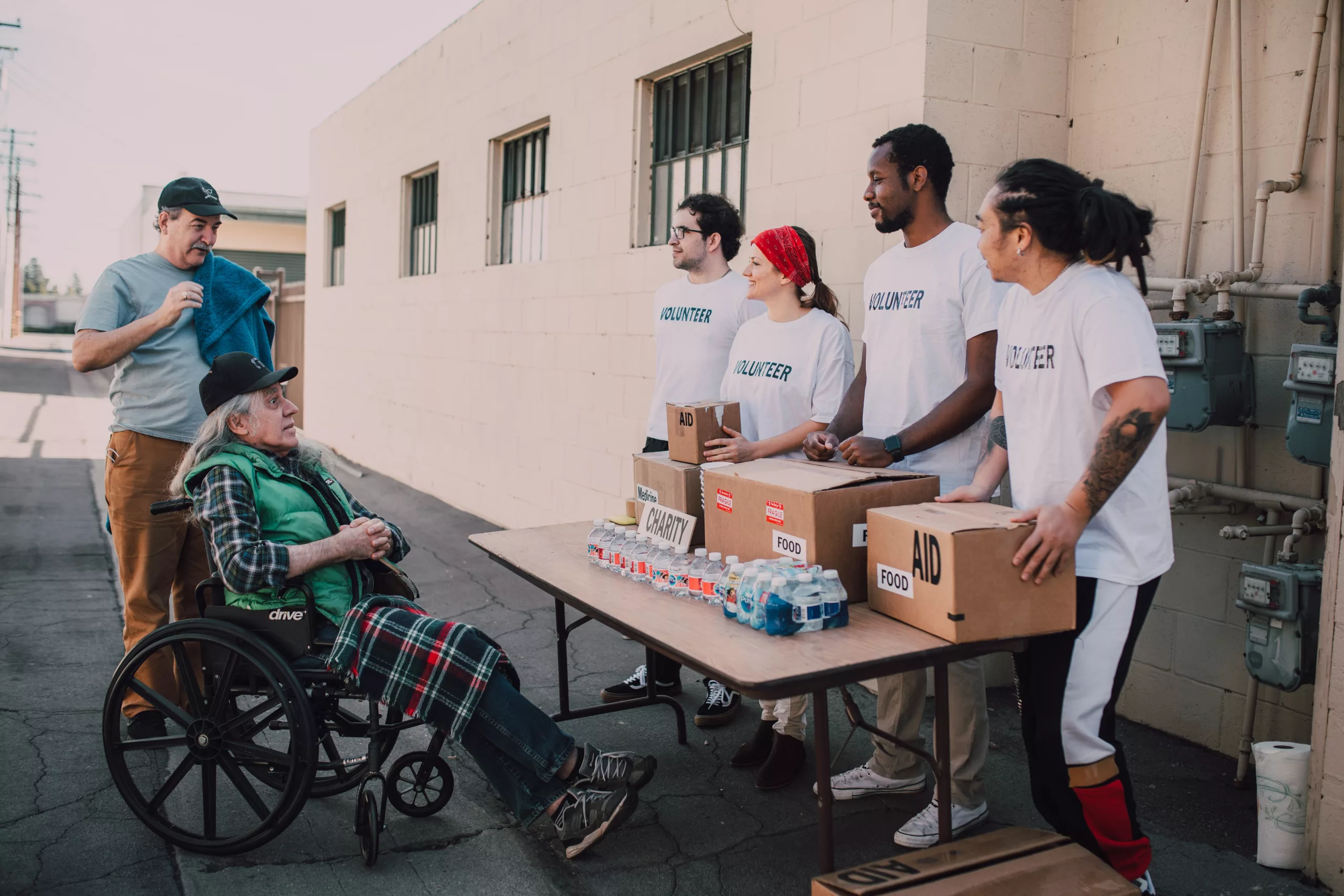In a constantly evolving landscape, nonprofits face challenges in effective fundraising. This article explores impactful fundraising ideas for nonprofits, providing strategies to thrive in the digital age and ensure lasting positive impact.
Digital Fundraising Strategies
The digital era has opened up new avenues for nonprofits to amplify their fundraising efforts. Among these, social media campaigns and email marketing are two powerful tools that can significantly enhance a nonprofit’s ability to raise funds and awareness.
Social Media Campaigns
Social media platforms offer a unique and expansive opportunity for nonprofits to engage with a wide audience. Here, the key is to create content that resonates with followers, encouraging them to support and share the nonprofit’s message.
- Creating a Strong Narrative: Your social media campaign should tell a story that connects with your audience on an emotional level. Use real-life examples, impactful images, and compelling videos to illustrate the difference your organization makes.
- Interactive and Engaging Content: Host live sessions, Q&As, and interactive polls to engage your audience. Encourage user-generated content through challenges or hashtags to increase reach and engagement.
- Consistency and Frequency: Regularly update your social media channels with fresh content. This keeps your audience engaged and informed about your cause.
- Utilizing Different Platforms Wisely: Tailor your content to suit the nature of each platform. For example, visually compelling stories for Instagram, detailed posts for Facebook, and quick updates for Twitter.
- Influencer Partnerships: Collaborate with influencers who align with your mission. They can help amplify your message to a broader audience.
- Tracking and Analytics: Use social media analytics to understand what works best for your audience. Adjust your strategy based on these insights to improve engagement and donations.
Email Campaigns
Email campaigns are a direct and personal way to reach potential donors and are crucial in building long-term relationships.
- Personalization: Use the recipient’s name and tailor the content to their interests and past interactions with your organization. Personalized emails often have higher open rates and engagement.
- Segmentation: Group your email subscribers based on various criteria like donation history, interests, or demographics. This allows for more targeted and relevant communications.
- Compelling Subject Lines: The subject line is the first thing recipients see. Make it catchy and intriguing to encourage them to open the email.
- Storytelling and Visuals: Like with social media, storytelling is vital. Use compelling narratives and visuals to convey the impact of donations and the importance of your cause.
- Clear Call-to-Action (CTA): Your email should have a clear CTA, guiding readers on what to do next – whether it’s making a donation, attending an event, or sharing information about the cause.
- Testing and Optimization: Regularly test different elements of your email campaigns (like subject lines, email layouts, and CTAs) to see what yields the best results. Use these insights to continually refine your approach.
Creative Fundraising Events
Innovative and engaging events are a cornerstone of successful fundraising for nonprofits. They not only raise funds but also build community, increase awareness, and strengthen supporter engagement. Both virtual and in-person events offer unique opportunities to connect with donors in meaningful ways.
Virtual Events
Virtual events have become increasingly popular, offering a cost-effective and wide-reaching alternative to traditional in-person gatherings. They can be just as impactful and engaging when executed creatively.
- Webinars and Online Workshops: Host educational or entertaining webinars with experts, celebrities, or influential speakers. You can charge a registration fee or ask for donations.
- Virtual Concerts or Performances: Collaborate with artists or performers to host a concert or performance online. Live streaming on platforms like YouTube or Facebook can attract a wide audience.
- Virtual Runs or Fitness Challenges: Encourage participants to complete a run, walk, or fitness challenge on their own time and track their progress online. Participants can raise funds by soliciting sponsorships from friends and family.
- Online Auctions or Raffles: Host online auctions with donated items or services. Utilize platforms that allow for easy bidding and tracking.
- Interactive Virtual Tours: If your nonprofit is associated with a physical location (like a museum, historical site, or conservation area), offer virtual tours. This can be an immersive experience that encourages donations.
- Engaging Supporters Online: Use social media, emails, and your website to promote these events. Engaging content and regular updates can keep the excitement high and encourage participation.
Unique In-Person Events
While traditional galas and auctions are effective, exploring unique in-person event ideas can set your nonprofit apart and draw in different segments of your community.
- Themed Community Events: Host events with creative themes that resonate with your cause. For example, an environmental charity might host a nature walk or a clean-up day.
- Sports Tournaments: Organize community sports events, like golf tournaments, soccer matches, or bowling competitions. Participants can raise funds by getting sponsors.
- Art Exhibitions or Shows: Collaborate with local artists for an art show where a portion of the proceeds from sold artwork goes to your cause. This can also be a great way to involve the local arts community.
- Educational Workshops or Classes: Offer classes or workshops in areas related to your cause. For example, a cooking class for a food-based charity or DIY workshops for a housing charity.
- Community Involvement and Partnerships: Partner with local businesses for event sponsorships or to host joint events. This not only helps in reducing costs but also in reaching a wider audience.
- Cultural Festivals or Food Fairs: Organize a local festival celebrating different cultures or a food fair with local vendors. These events can attract large crowds and generate significant funds.
Community-Based Fundraising
Community-based fundraising harnesses the collective power and networks of individuals to amplify fundraising efforts. This approach not only raises funds but also expands the reach of the nonprofit’s message and mission.
Peer-to-Peer Fundraising
Peer-to-peer (P2P) fundraising empowers individuals to raise money on behalf of a nonprofit. This strategy turns supporters into active fundraisers, leveraging their networks for greater reach.
- Empowering Supporters: Provide your supporters with the tools and resources they need to fundraise effectively. This includes digital platforms for setting up personal fundraising pages, templates for emails and social media posts, and guidance on how to ask for donations.
- Events and Challenges: Encourage supporters to participate in events or challenges, like marathons, bike rides, or even personal challenges like birthday fundraisers. These events give a tangible goal and focus to their fundraising efforts.
- Training and Support: Offer training sessions or materials to help supporters understand the best ways to fundraise. Continuous support and encouragement are crucial to keep them motivated.
- Recognition and Appreciation: Acknowledge and thank your peer fundraisers. Recognition can be public shout-outs on social media, thank-you letters, or awards for top fundraisers.
- Examples and Best Practices: Share stories and examples of successful peer-to-peer fundraisers to inspire and guide new participants. Highlighting different strategies that worked well can provide valuable insights for others.
Crowdfunding
Crowdfunding involves raising small amounts of money from a large number of people, typically via the internet. It’s an effective way to engage a broader audience and garner support for specific projects or causes.
- Choosing the Right Platform: Select a crowdfunding platform that aligns with your cause and has a user-friendly interface. Popular platforms include GoFundMe, Kickstarter, and Indiegogo, each with its own set of features and audience.
- Crafting a Compelling Narrative: Your campaign should tell a story that resonates with potential donors. Use emotional and impactful storytelling to illustrate the importance of your cause and the difference their contribution can make.
- Setting Clear Goals: Be clear about what you’re raising funds for and how the funds will be used. Specific and tangible goals often attract more donors.
- Engaging Visuals and Videos: Create high-quality visuals and videos to support your narrative. This content should be shareable and compelling enough to encourage supporters to spread the word.
- Regular Updates and Transparency: Keep your donors and potential donors informed about the progress of your campaign. Regular updates foster trust and can encourage additional donations.
- Social Media and Marketing: Utilize social media, email newsletters, and other marketing channels to promote your crowdfunding campaign. Engage with your audience and respond to comments and questions to build a community around your campaign.
Conclusion
In conclusion, the landscape of nonprofit fundraising is continually evolving, demanding a blend of innovative strategies, data-driven insights, and adaptability. By embracing these dynamic approaches, nonprofits can not only meet their current fundraising goals but also pave the way for long-term success and impact in their communities.



